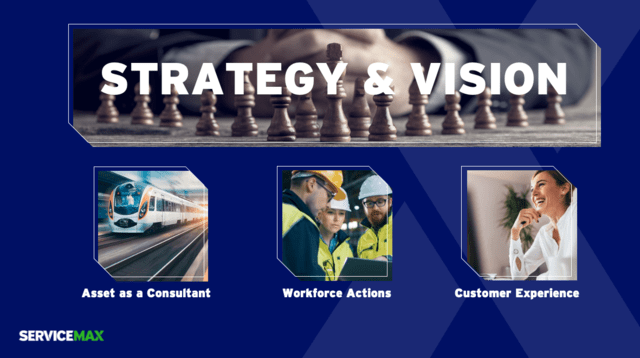February 2021, breaking news, your engineering team issues a mandatory engineering change to all product models ABC built between 2011 – 2013. “The gearbox needs a retrofit to avoid potential injury and claims”.
Change the verbatim, the dates or the technical details. I guess you’ll recognise the scenario. Whether the origin of the change is quality, compliance, engineering maturity or commercially driven, managing engineering changes is a big deal. A big deal because you don’t want claims. You don’t want your brand image tarnished. You don’t want cost overruns. It’s a big deal because you want to convert a negative into a positive.
Engineering changes extend into the operational life cycle of a product
I once believed every product was 100% engineered before it found its way onto the markets. Having run service organisations for more than 25 years I’ve reduced my confidence in this percentage year over year. Don’t get me wrong, I don’t mean to say that is a bad thing, but I do want to emphasise that acknowledging that anything less than 100% puts a burden on the service organisation to build mitigating processes.
I’ve seen organisations introduce 80% engineered products by business model design, as they need the usage feedback to finalise the engineering. Other organisations aim at a near 100% engineered product, only to discover their products are used in unforeseen contexts leading to post-GA modifications. And in the digital age I see more and more organisations enhancing product capabilities of physical products by ‘selling’ software upgrade options.
Where is my Installed Base?
All variants share a common premise: you need to have installed base visibility as well as an accurate as-maintained BoM to be able to manage your engineering changes effectively.
To illustrate this, I’ll give an example on the other end of the spectrum. If you don’t know where the affected products are, and you have a compliance obligation to reach out to the product/ asset owners, you can only go public … and that is not good for your brand image … as many car manufacturers and food companies will confirm.
In our Global Customer Transformation (GCT) practice we often see a hybrid. Some units sold have an associated warranty and/ or service contract, other units are not visible because they are sold via an indirect channel and/or the owner does not want to be visible. What engineering change managers need is a ‘workbench’ to create a near-complete installed base from multiple data sources.
Now we have a near-complete installed base, we can filter on model ABC with a commissioning date between 2011 – 2013.
Spread the Wealth
A common characteristic of engineering changes is that they tend to come at an inconvenient time, on top of the existing workload. What potentially complicates things is the combination of a) the availability of replacement parts and b) the customer expectation to be first in line.
Let me give you an illustration that reveals my age. In 1989 Intel launched the 80486 processor. High-end customers upped the specs of their PC’s with the 80487 co-processor. Then a researcher detected a mathematical flaw in the co-processor. Immediately people wanted a replacement. The supply chain was stocked with the flawed 80487 revision 1, whilst Intel had to ramp the production and shipments of revision 2. In analogy to Covid-19 vaccinations you can imagine this became a puzzle of priorities and constant shifting plans.
In our GCT practice we talk to Engineering Change Managers. They receive so called product bulletins on a regular basis. And each time they need to make decisions on when to launch an engineering change campaign while weighing brand image, quality and cost. And once they have launched a campaign, they want to know the progress. But the most asked ‘feature’ by Engineering Change Managers is the ability to adapt the priorities in a campaign based on progress, the amount of ‘wealth’, the voice of the customer and the impact on existing SLA & Contract commitments. Regarding the latter, I’ll dedicate my next blog on Engineering Change prioritisation strategies.
Digital EC’s and Retrofit Kits as Upsell and Lock-in instrument
I’d like to change the ‘energy level’ of the conversation. Engineering changes are not always negative from a quality, financial or brand image perspective.
There is a limit to the number of mechanical and electrical changes you can make to a product post commissioning using Retrofit Kits, but more modern products have an ever-growing digital component. Digital engineering maturity continues post commissioning.Do you own a Sonos sound system, a Tesla, a digital press? The physical product you bought remains the same, while over-the-air digital EC’s deliver a steady stream of new features and enhancements. Whether your organisation uses this EC-stream for lock-in purposes or upsell revenue, at the core you need an asset centric infrastructure with comprehensive engineering change capabilities.
This article is published in ServiceMax Field Service Digital on March 2nd, 2021



